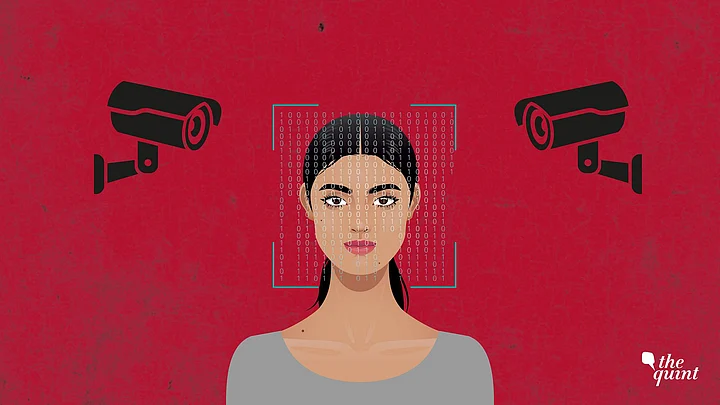The Health Department of Abu Dhabi has approved the use of EDE scanners, a facial scanning technology that is said to detect coronavirus, across the United Arab Emirates.
According to a statement from the Abu Dhabi Emergency, Crisis and Disasters Committee, the scanners will limit COVID-19 transmission by establishing safe zones that are subject to a series of preventive procedures.
Residents of Abu Dhabi continue to witness the use of EDE scanners at shopping malls, residential areas, land and air entry points.
But, are EDE scanners reliable? The Quint spoke to Indian scientists to understand how good the technology behind these scanners is.
What is an EDE Scanner?
Exponential Deep Examination (EDE) scanners have been developed by EDE Research Institute Abu Dhabi under the International Holding Company (IHC).
Abu Dhabi government claims that the technology can detect a possible COVID-19 infection by scanning the face of an individual and then measuring electromagnetic waves, which change when the RNA particles of the virus are present in the person’s body, therefore providing an immediate result.
EDE scanners are said to collect electromagnetic waves within a 5-meter radius.
When a person enters that radius – of the facial EDE scanner – electromagnetic waves are changed. A machine-learning algorithm immediately compares the information against the unique COVID-19 RNA molecule. If it is found positive, the person is potentially infected and must take a COVID test within 24 hours. If it is negative, they can enter the location.
According to the press release by Abu Dhabi health department, the pilot trial on 20,000 people tested showed 90.3 percent sensitivity, reflecting the accuracy of identifying infected individuals, and 83 percent accuracy in the specificity of the test, reflecting the accuracy of identifying non-infected individuals.
How Reliable Are EDE Scanners?
S Krishnaswamy, scientist and retired Professor of Madurai Kamaraj University told The Quint that the technology behind it seems to be a hoax.
"The only way electromagnetic radiation could distinguish RNA would be by absorption but this would be so small and undetectable at these ranges and levels. How would the cell RNA be differentiated from viral RNA?" he questioned.
"It seems either the Abu Dhabi government is being taken for a ride or they are taking people for a ride," he added.
"All RNA molecules would behave the same irrespective of whether it is viral RNA or cellular RNA. Unless there is a high local concentration of virus that changes the RNA concentration in the cells of the nose, throat and lungs it will not make any detectable change. From a 5-meter distance such changes would be extremely difficult to find out."S Krishnaswamy, Scientist
Priyanka Golellu, a technical scientist, agrees. In a conversation with The Quint, she said the presence of genetic material will be required to detect the viral load on the person but there are certain enzymes which degrades the genetic material such as DNA and RNA. So, it makes it impossible to estimate the viral load.
Thermal Scanners vs EDE Scanners
Thermal scanners detect the Infrared radiation and determine the temperature using standard black body radiation curves.
Since COVID can cause fever, a rise in body temperature can indicate so. However, EDE scanners cannot detect fever.
"Thermal scanner detects temperature quite efficiently. However EDE scanners does not seem to look at temperature. Studying the current EDE scanner description we can say that it cannot work and detect COVID," said S Krishnaswamy rather firmly.
(At The Quint, we question everything. Play an active role in shaping our journalism by becoming a member today.)
